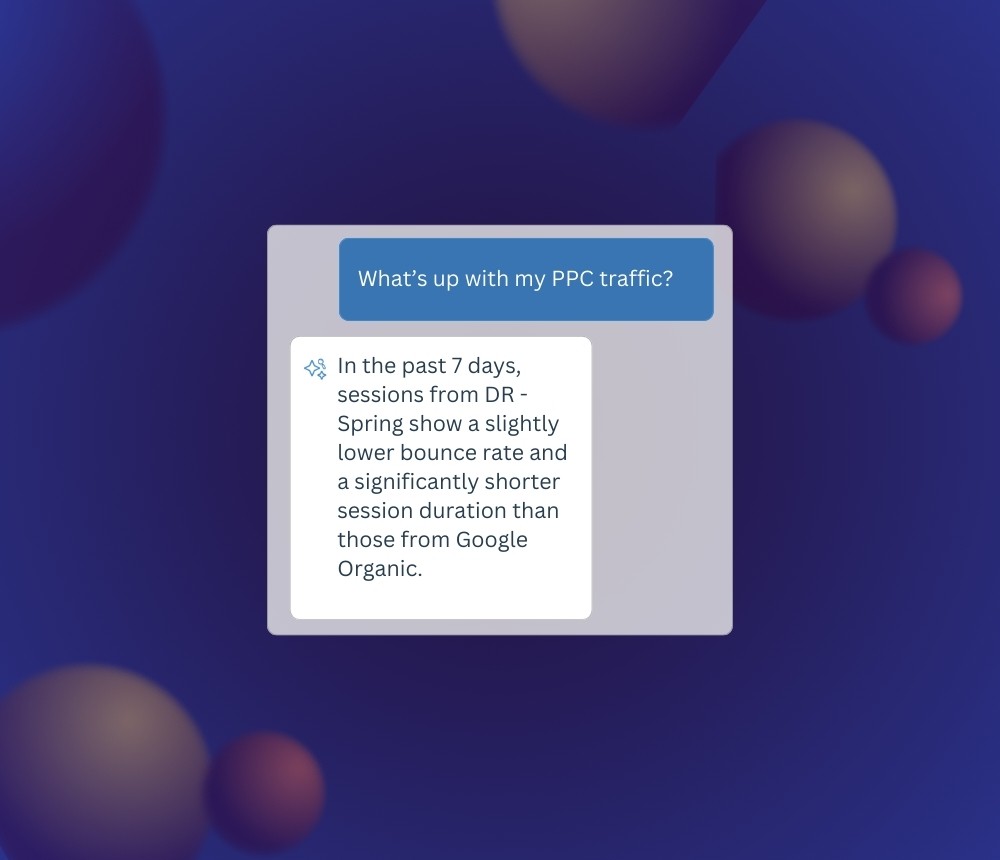Why Conversion Rate Optimization Matters for Business

Every day, businesses pour money into advertising and marketing to bring visitors to their websites. But what happens when those visitors arrive? For most websites, 95-98% of visitors leave without taking any action.
That’s a lot potential revenue slipping away.
Conversion rate optimization (CRO) is the key to turning casual visitors into engaged customers. It’s not about driving more traffic—it’s about making the most of the traffic you already have.
With the right CRO strategies, you can reduce acquisition costs, improve customer experience and make every marketing dollar work harder. A well-optimized website doesn’t just attract visitors—it guides them toward action.
Why Should Businesses Care About Conversion Rate Optimization?
Conversion Rate Optimization is all about fine-tuning your website to turn more visitors into customers. Whether your conversion rate is based on making a purchase, signing up for a free trial or filling out a contact form, CRO focuses on increasing the percentage of people who take meaningful action on your site.
With techniques like redesigning landing pages or optimizing calls-to-action, CRO ensures your website isn’t just a sad, underperforming digital storefront—it’s a powerful tool for driving growth. By enhancing the visitor experience, CRO helps boost conversion rates and unlocks real business potential.
CRO isn’t just about generating traffic—it’s about maximizing the value of the visitors you already have. Here’s how focusing on CRO can transform your business:
1. Drive Revenue Growth Without Extra Ad Spend
Even a small percentage increase in conversion rates can result in significant revenue growth.
If your website currently has a 2% conversion rate and you increase that to 3%, your revenue just grew by 50% without spending more on paid campaigns such as PPC or social media advertising. Increasing conversion rates can help acquire more customers efficiently, enhancing overall marketing effectiveness.
Create A Better Customer Experience
While we like to quantify conversion rate optimization efforts through key performance indicators (KPIs), CRO is about so much more than numbers. It’s about understanding what your visitors need, removing friction from the customer journey, and creating seamless user experiences.
User testing informed by CRO research is crucial in identifying friction points, which can significantly enhance the customer experience.
A great customer experience improves conversion rates while building loyalty and trust. Improving the customer experience can also lead to lower customer acquisition costs by making your marketing efforts more effective and efficient.
Use Data to Make Smarter Decisions
Standing out in your industry means relying on more than guesswork.
CRO tools help you analyze visitor behavior, pinpoint what’s working, and identify where improvements are needed. By continually testing and adjusting, you can refine your site to deliver exceptional user experiences and measurable business results—keeping your customers engaged and coming back.
With CRO as part of your strategy, you can turn your website traffic into measurable growth. It’s not just about more visitors; it’s about making every visitor count.
Psychology Behind Conversions
Conversion rate optimization isn’t just about design and data—it’s about understanding human behavior. People make decisions based on emotions, habits and subtle psychological cues.
Scarcity & Urgency: Limited-time offers create urgency, encouraging immediate action.
Social Proof: People trust what others say. Reviews, testimonials, and case studies build confidence.
Value Proposition Clarity: If visitors can’t immediately see why your offer is valuable, they leave. Keep it clear and compelling.
Cognitive Load Reduction: Too many choices overwhelm people. Simplify navigation and CTAs to make decisions easier.
Small tweaks—like clearer messaging, well-placed testimonials or better CTA placement—can lead to significant improvements in conversion rates.
Understanding User Behavior
One of the pillars of effective CRO is to analyze user behavior to understand the “why” behind your visitors’ actions (or inactions). From which pages they land on to where they drop off in the funnel, their behavior reveals critical insights that can drive your CRO strategy. To improve user experience, it is essential to analyze user behavior through methods like heatmaps and session recordings, identifying patterns such as cart abandonment and testing different strategies.
By analyzing user feedback and website data, you can identify areas for improvement and optimization. This approach helps in understanding visitor behavior more comprehensively, leading to better engagement and conversion rates.
Tools to Analyze Visitor Behavior
Lucky Orange's visitor behavior tools like Dynamic Heatmaps, Form Analytics, Session Recordings and Surveys shine a light on your audience’s experience. These tools help identify and optimize desired actions on your website, such as making purchases or signing up for newsletters. For example:
Dynamic Heatmaps: Discover exactly where visitors click, scroll and spend time on your site. Are they missing an important call-to-action (CTA)? Ignoring key content? Dynamic heatmaps take this even further, allowing you to analyze interactions with pop-ups, drop-down menus, and other interactive elements. Heatmaps pinpoint where your site is falling short.
Form Analytics: Combining heatmap insights with detailed form reports, form analytics highlight specific fields that cause drop-offs or take longer to complete. From contact forms to checkout pages, you can identify friction points and optimize your forms to minimize abandonment.
Session Recordings: Watch the real-time customer journey to uncover key roadblocks or sources of confusion. See exactly how users navigate your site—from landing to exit—and identify the moments where they struggle.
On-site Surveys: Go beyond assumptions and hear directly from your visitors. Ask targeted questions like, “What stopped you from completing your purchase?” to surface valuable feedback and understand user pain points. Surveys complement behavioral tools to give you a complete picture of your customer experience.
Data-Driven Decision Making with Quantitative and Qualitative Data
What makes conversion rate optimization important is the strategies that combine qualitative insights from visitor behavior tools with quantitative data from analytics platforms. By using both qualitative and quantitative data, you are empowered to make confident, data-backed decisions by showing exactly where and why users struggle.
For instance, Google Analytics might reveal high mobile traffic from a campaign but low conversions. Is your ad targeting the wrong audience, or is the page experience flawed? A session recording could uncover the issue—like a pop-up blocking the checkout button for mobile users.
Instead of guessing, Lucky Orange gives you the tools to see exactly what’s happening and act on it. By focusing on these actionable insights, you can make meaningful changes that maximize impact, improve user experience, and ultimately boost conversion rates.
Common CRO Mistakes to Avoid
Not all conversion rate optimization strategies work the same way, and some can even backfire. Avoid these common mistakes:
Ignoring Mobile Users: If your site isn’t mobile-friendly, you’re losing conversions. Most users browse on their phones—optimize for them.
Too Many Steps in the Conversion Process: The more steps, the more chances for drop-off. Keep forms and checkouts simple—which will keep acquisition costs low.
Skipping User Research: Guessing what works isn’t a strategy. Use analytics tools, session recordings, and surveys to see real behavior.
Making Changes Without Testing: A/B testing ensures that new designs or copy actually improve conversions instead of hurting them.
Slow Page Speed: A one-second delay can cost conversions. Fast-loading pages keep website visitors engaged.
CRO isn’t about guessing—it’s about data-backed improvements that drive results.
Key Elements of Effective CRO
CRO revolves around making your website both functional and delightful. Optimizing your landing page is crucial for better conversions, as its layout, design, and mobile responsiveness significantly impact effectiveness. While search engine optimization focuses on improving page rankings and user engagement, conversion rate optimization aims to turn visitors into customers. Here’s how to build an optimization strategy that converts.
1. Evaluate User Experience (UX) and Customer Journey
Think of UX as the foundation of CRO. If your site is difficult to navigate or slow to load, users won’t stick around long enough to convert. With tools like heatmaps and session recordings, you can pinpoint issues and make targeted improvements.
Page Load Speed: Even a one-second delay can hurt conversions. Use tools to identify pages with high bounce rates and analyze session recordings to uncover problem areas.
Mobile Optimization: Over half of web traffic comes from mobile, so your site must provide a flawless experience across all devices. Lucky Orange's device-specific filters help you see how visitors interact with your site on mobile and adjust accordingly.
Seamless Navigation: Ensure visitors can find what they’re looking for with intuitive layouts and simple menus. If users rely heavily on your search feature, it could indicate confusion in your navigation.
2. Analyze Design, Forms and CTA
Your website’s design and calls-to-action (CTAs) don’t just need to look good—they need to drive conversions. With Lucky Orange's tools, you can monitor how users engage with these key elements and make strategic changes.
Design: A clean, professional design aligned with your brand builds trust. Look at the use of whitespace, font styles, and color schemes as they significantly influence user perception and interaction. Use visitor feedback surveys to understand how users feel about your site’s appearance and functionality.
CTAs: Clear, bold CTAs are essential. Heatmaps show you exactly how users interact with your CTAs, helping you fine-tune placement, wording, and design for maximum impact.
Forms: Forms are where visitors become customers. Identify high-abandonment fields and watch session recordings to uncover issues like unclear instructions, unnecessary fields, or error messages.
3. Test and Iterate Constantly
CRO isn’t a one-time project—it’s a continuous cycle of testing, learning, and improving.
Performance Changes: A/B testing reveals what works and what doesn’t. Whether it’s a new CTA placement or a revised headline, user testing ensures your changes lead to real improvements.
Incremental Improvements: Small tweaks can lead to big gains. Test changes like form field adjustments, CTA placement, or headline variations to drive measurable results.
Risk Mitigation: Ensure you're making the right changes to your website through experimentation. Before you implement changes to 100% of your traffic, run an A/B test to ensure the changes aren't negatively impacting your conversions and minimize potential drawbacks.
4. Implement Winning Variants and Continue Evolving
CRO doesn’t stop after a successful test. Continuous monitoring and iteration keep your website aligned with changing customer behaviors and preferences.
Analyze Results: Your A/B experimentation platform will declare a winner based on a number of factors, but it's ultimately up to you to determine how the winning variant impacted visitor behavior. Understand how winning variants improve visitor behavior using session recordings and ensure they’re optimized before full implementation.
Continuously Monitor: Conversion rate optimization doesn't stop when a winner is implemented and the website changed. Even after changes are live, keep tracking engagement and conversions. Data trends can reveal new opportunities for improvement.
Evolve with Your Users: As visitor expectations shift, so should your CRO strategy. Regularly test and refine your website to stay ahead of the competition and meet user needs. Regularly updating your strategies ensures that your website remains aligned with customer expectations and conversion goals.
Real-World Success Stories in CRO
1. Broken Tractor

BrokenTractor.com, an e-commerce store with over 15,000 tractor parts, faced a challenge with confusing navigation and incomplete product details. By using Lucky Orange’s Session Replays and Dynamic Heatmaps, they revamped their search functionality and fixed unclear links. These changes made it easier for customers to find products and reduced drop-offs. Read the full case study here.
CRO Takeaway: Watch how users interact with your site in real time. Clear navigation and accessible information can dramatically improve user experience and conversions.
2. Dia Creative

Marketing agency Dia Creative partnered with a children’s clothing brand to optimize conversions by addressing a simple yet critical issue—unclickable images. By making the images clickable and improving their placements, the brand enhanced the user experience and increased conversion rates from 1.75% to 3.1%. Read the full case study here.
CRO Takeaway: Small, strategic changes like fixing unclickable elements can have a big impact when they align with how users expect to interact with your site.
3. Miss Amara

Miss Amara, an online rug retailer, used Lucky Orange’s heatmaps, session recordings, and live chat tools to uncover key friction points in their customer journey. By redesigning product pages and simplifying navigation, they achieved a 231% increase in conversion rates and improved customer satisfaction. Read the full case study here.
CRO Takeaway: Tools that visualize user behavior provide actionable insights, helping you make data-driven changes that boost conversions and improve customer experience.
Measuring and Tracking CRO Success
What gets measured, gets improved.
To evaluate your CRO efforts, clearly define your KPIs to track from both your visitor behavior and data analytics platforms. By setting specific goals and metrics, you can track progress, identify areas for improvement, and make data-driven decisions that enhance your conversion rates.
Key Metrics for CRO: Visitor Behavior
Scroll Depth: See how far visitors scroll down your pages and identify if critical content is placed too low or isn’t engaging enough to hold their attention.
Time Spent On Page and Session Duration: Discover which pages and content resonate most with your users based on the time they spend engaging with them.
Form Abandonment Rate: Spot where users drop off on your forms using heatmaps and session recordings, so you can optimize and improve form completions.
Pages Per Session: Understand how many pages visitors view to gauge engagement and the quality of their experience.
Key Metrics for CRO: Data Analytics
Conversion Rate: Monitor the percentage of visitors completing your desired action and watch it climb as you optimize.
Bounce Rate: Identify high bounce rates that could indicate poor user experience or irrelevant content, then make adjustments with confidence.
Customer Lifetime Value (CLV): Measure the long-term impact of your efforts, including better conversions and enhanced customer experiences.
Revenue Per Visit (RPV): See the average revenue generated per visitor, helping you assess overall site performance beyond just conversions.
Regularly reviewing and adjusting your KPIs ensures that your CRO strategy remains aligned with your business objectives and adapts to evolving user expectations.
Conversion Rate Optimization is more than just improving numbers—it’s about building websites that truly connect with your audience and drive meaningful, lasting results.
With the right CRO strategy, you can unlock exponential growth in revenue and customer satisfaction. Whether you're managing an e-commerce store or leading a digital marketing campaign, optimizing your site with the right tools can make all the difference. Start turning clicks into loyal customers today.



